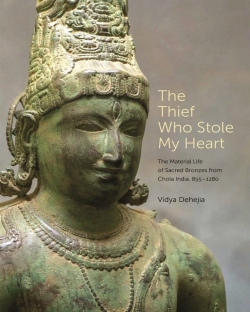Brutal Aesthetics: Dubuffet, Bataille, Jorn, Paolozzi, Oldenburg
Hal Foster
Princeton University Press, Bollingen Series
November 2020
Center publications include collections of essays based on symposia and seminars, web presentations, reference works, and special publications.
Two publications appeared from the Bollingen Series published by Princeton University Press in association with the National Gallery of Art. Based on the 67th A. W. Mellon Lectures in the Fine Arts, Brutal Aesthetics: Dubuffet, Bataille, Jorn, Paolozzi, Oldenburg by Hal Foster, Princeton University, was published in November 2020. The Thief Who Stole My Heart: The Material Life of Sacred Bronzes from Chola India, 855–1280 by Vidya Dehejia, Columbia University, was published in May 2021, and stems from the 65th A. W. Mellon Lectures in the Fine Arts.
Recent Publications
Upcoming Publications
Beauty Born of Struggle: The Art of Black Washington, edited by Jeffrey C. Stewart, Studies in the History of Art, vol. 83, Symposium Papers LX
Boundary Trouble: The Self-Taught Artist and American Avant-Gardes, edited by Lynne Cooke, Studies in the History of Art, vol. 84, Symposium Papers LXI
Black Modernisms, edited by Steven Nelson and Huey Copeland, Seminar Papers, vol. 4
Recent Web Presentations
Reflections on the Collection: The Edmond J. Safra Visiting Professors at the National Gallery of Art




